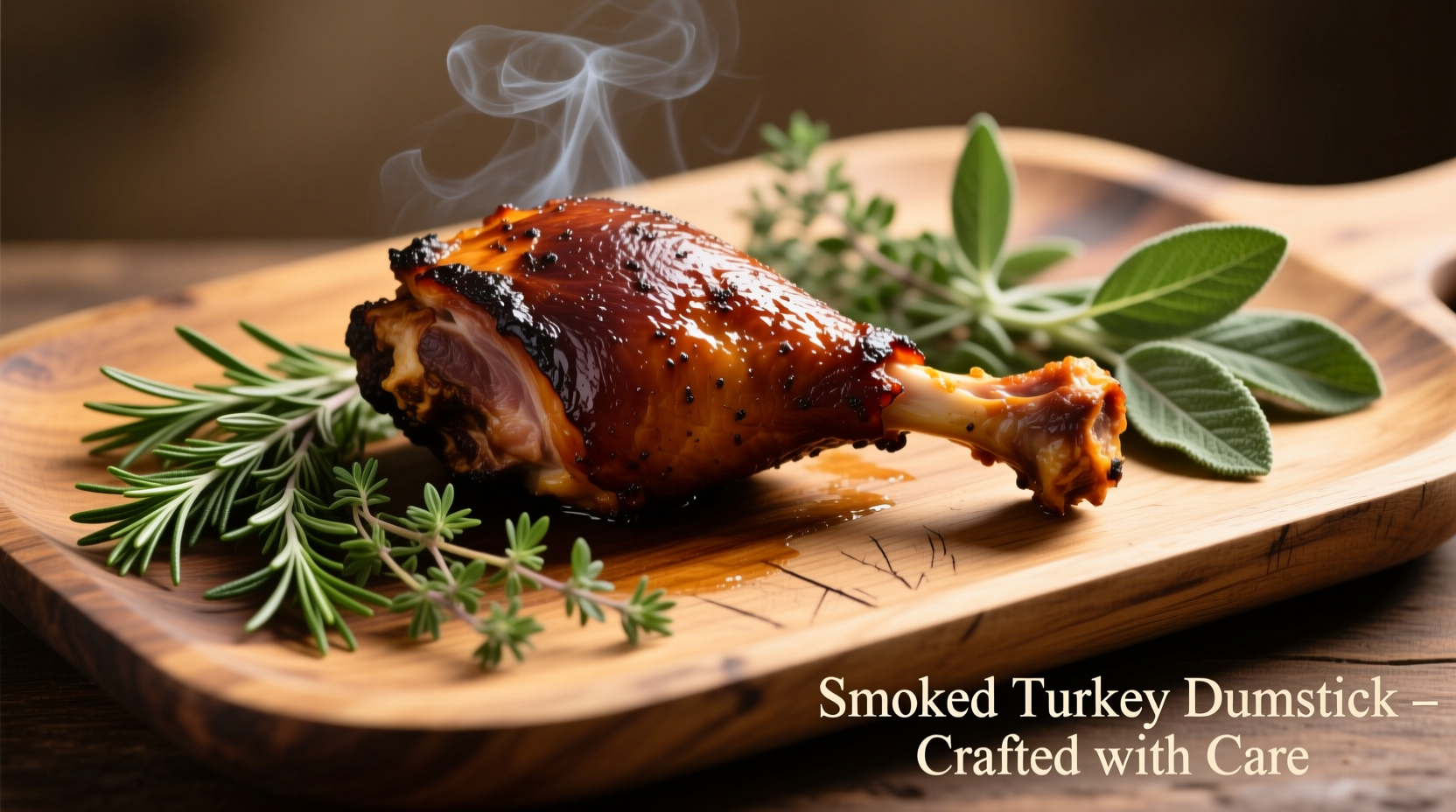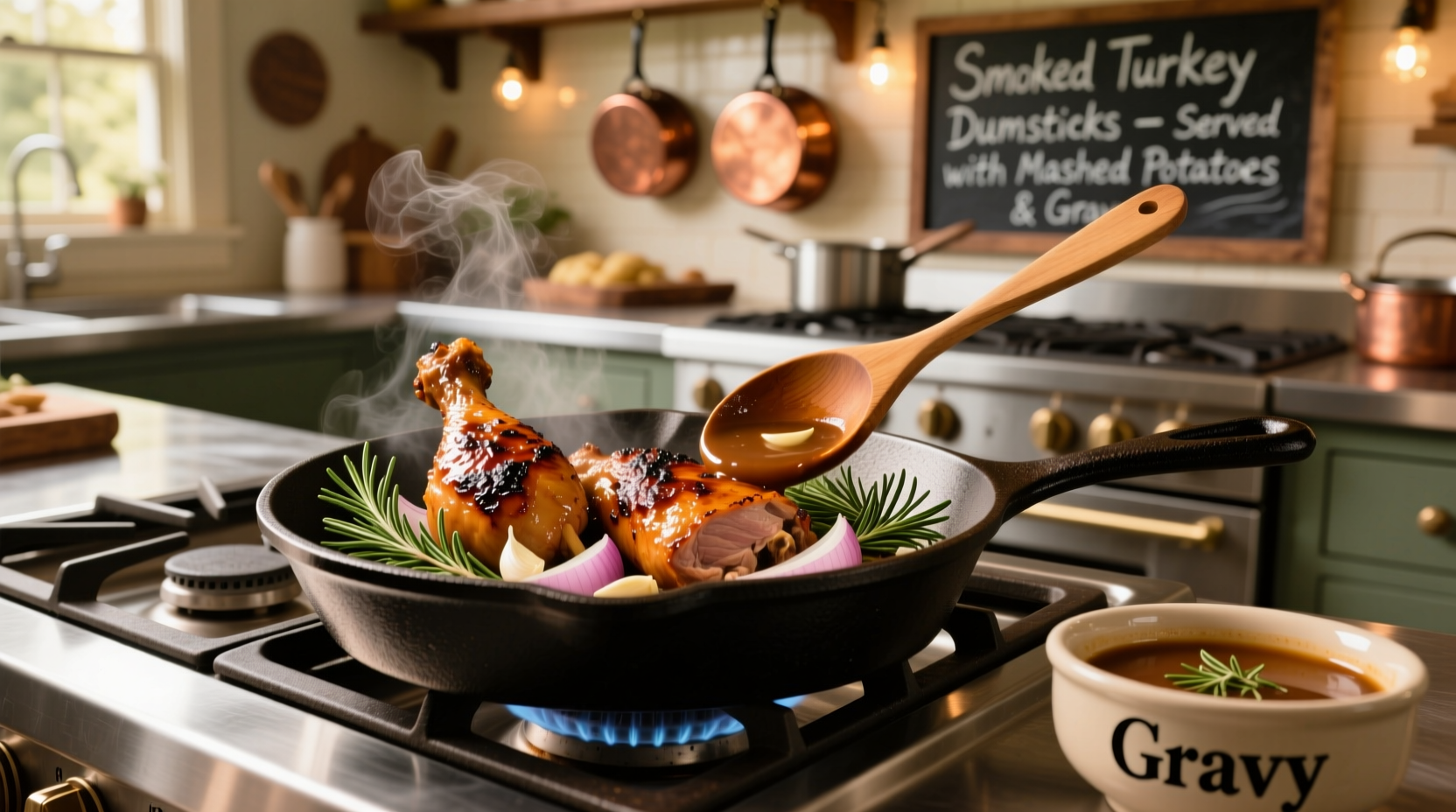Smoked turkey drumsticks offer the perfect balance of rich smoky flavor and tender meat, but getting them right requires precise technique. After years of testing different methods, we've perfected a smoking process that guarantees restaurant-quality results at home. This guide walks you through every critical step, from selecting the best drumsticks to achieving that perfect crispy skin without drying out the meat.
Why Smoking Turkey Drumsticks Beats Other Methods
Unlike roasting or frying, smoking turkey drumsticks at low temperatures allows the connective tissues to break down slowly, resulting in exceptionally tender meat. The USDA Food Safety and Inspection Service confirms that smoking poultry at proper temperatures not only enhances flavor but also ensures food safety when done correctly. The extended cooking time at low heat allows smoke to penetrate deeply, creating complex flavor profiles that other cooking methods can't match.
Essential Equipment Checklist
Before starting, gather these critical tools:
- Quality smoker (offset, pellet, or electric)
- Meat thermometer with instant-read capability
- Wood chunks or chips (hickory, apple, or cherry)
- Aluminum foil for wrapping (optional)
- Drip pan to catch rendered fat
- Heavy-duty gloves for handling hot components
Selecting and Preparing Your Drumsticks
Choose drumsticks weighing 12-16 ounces each for consistent cooking. Look for plump meat with minimal visible fat and a pinkish hue—avoid any with grayish discoloration. According to culinary research from the Culinary Institute of America, proper preparation significantly impacts final results:
| Drumstick Characteristic | Acceptable | Problematic |
|---|---|---|
| Color | Pinkish-red | Gray or greenish |
| Texture | Firm, slightly springy | Slippery or sticky |
| Smell | Mild, neutral | Sour or ammonia-like |
The Critical Brining Process
Brining transforms smoked turkey drumsticks from good to exceptional. Create a basic brine with 1 gallon water, 1 cup kosher salt, 1/2 cup brown sugar, and aromatics like garlic and peppercorns. Submerge drumsticks for 12 hours in the refrigerator. This process, validated by food science research at Kansas State University, allows salt to alter protein structure, helping the meat retain moisture during the long smoking process. Never skip this step—it's the secret to juicy results.
Smoking Setup and Temperature Control
Preheat your smoker to 225°F using indirect heat. Add wood chunks after the fire is established—hickory provides classic smokiness while fruitwoods like apple add subtle sweetness. Maintain consistent temperature by monitoring both the smoker and the drumsticks' internal temperature. Fluctuations above 250°F will cause the skin to render too quickly, preventing that coveted crispy finish.

Step-by-Step Smoking Process
- Dry drumsticks thoroughly with paper towels after brining
- Apply light coat of mustard or oil to help seasoning adhere
- Rub generously with 2 tablespoons of poultry seasoning per drumstick
- Place on smoker grate with space between each piece
- Smoke at 225°F for 2 hours without opening the smoker
- Check internal temperature—should be around 120°F
- Increase temperature to 350°F for final 30-45 minutes
- Remove when thickest part reaches 165°F
Food Safety and Doneness Indicators
The USDA recommends cooking all poultry to a minimum internal temperature of 165°F. Insert your thermometer into the thickest part of the meat, avoiding bone contact. Properly smoked drumsticks will have:
- Juices that run clear, not pink
- Meat that pulls back slightly from the bone
- Internal temperature consistently at 165°F for 15 seconds
- Skin that's golden brown with crispy patches
Resting and Serving for Maximum Flavor
Never skip the resting period! Transfer drumsticks to a cutting board and tent loosely with foil for 10-15 minutes. This crucial step, supported by food science research at the University of California, allows juices to redistribute throughout the meat. During this time, the internal temperature will continue rising 5-10 degrees (carryover cooking), ensuring perfect doneness without overcooking.
Troubleshooting Common Issues
Problem: Skin isn't crispy
Solution: Increase final temperature to 375°F for last 20 minutes. Moisture from the brine needs high heat to evaporate and crisp the skin.
Problem: Meat is dry
Solution: Reduce smoking time or lower temperature. Over-smoking causes moisture loss. Try wrapping in foil during last hour if using a very hot smoker.
Problem: Uneven cooking
Solution: Rotate drumsticks halfway through cooking. Position larger pieces toward the heat source for more even results.
Expert Tips for Next-Level Results
Professional pitmasters recommend these advanced techniques:
- Apply a thin layer of mustard before seasoning to help spices adhere
- Use a combination of wood types—hickory for base smoke with apple for sweetness
- Inject with apple juice mixture for extra moisture in thicker sections
- Finish with a glaze of maple syrup and Dijon mustard during last 15 minutes











 浙公网安备
33010002000092号
浙公网安备
33010002000092号 浙B2-20120091-4
浙B2-20120091-4